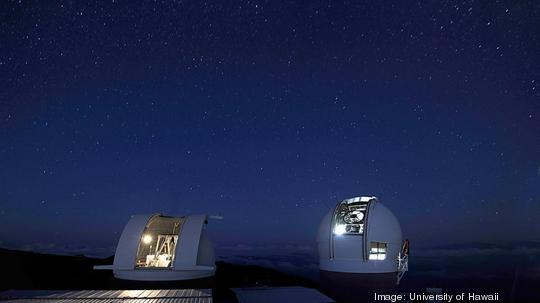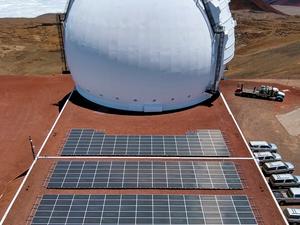
The University of Hawaii's Institute for Astronomy has been awarded $15 million from NASA to cover its operations spotting Earth-threatening asteroids from Maui for the next three years.
According to UH, the Institute for Astronomy's telescope surveillance of the stars atop Haleakala — known as Panoramic Survey Telescope and Rapid Response System, or Pan-STARRS — finds nearly 60% of the most dangerous Near-Earth Objects (NEOs) and Potentially Hazardous Asteroids (PHAs), with size greater than 140 meters across, among all worldwide telescopes.
"The Pan-STARRS team has had a huge impact on astronomy with a host of discoveries from the solar system to cosmology,” said Ken Chambers, UH astronomer and principal investigator of Pan-STARRS, in a statement. “These include the discovery of thousands of near-Earth objects, hundreds of Kuiper belt objects, dozens of comets, as well as Oumuamua — the first interstellar object. This NASA grant will enable us to continue our mission to protect the Earth from catastrophic asteroid impact as we scan the sky for anything that moves and everything that goes bang in the night.''
The $15 million has been NASA's standard allocation, Chambers told Pacific Business News, but that comes in the context of year-to-year funding fluctuations for the federal agency.
The vast majority of the grant goes toward paying salaries of scientists, engineers, technicians and software people who operate the observatory; the observatory's cyberinfrastructure; and the nightly data reduction, analysis and identification of Near Earth Objects.
"Thus most of the money goes into the local economy," Chambers told PBN. "The remainder is largely for computing resources and material needed to keep the observatory operating."
Pan-STARRS consists of the Pan-STARRS1 and Pan-STARRS2 telescopes, which have 1.4- and 1.5-gigapixel cameras — the two largest astronomical cameras in the world — and a large computing cluster on the Manoa campus.
In July of 2020, Pan-STARRS discovered the near-Earth asteroid, 2020 OO1, which was the length of about two school buses. At its closest approach on July 27, the asteroid passed within about 1.7 times the distance of the moon.
“Pan-STARRS is our insurance policy against one of these asteroids that may have a completely catastrophic impact on Earth such as the one that wiped out the dinosaurs and gave mammals ourselves a chance to get going," Chambers said.
Meanwhile, UH announced Friday that a team of its scientists used the Subaru Telescope on Mauna Kea in 2018 to spot one of the youngest planets ever found around a distant star. The planet, 2M0437b, was estimated by researchers to be a few times more massive than Jupiter.








